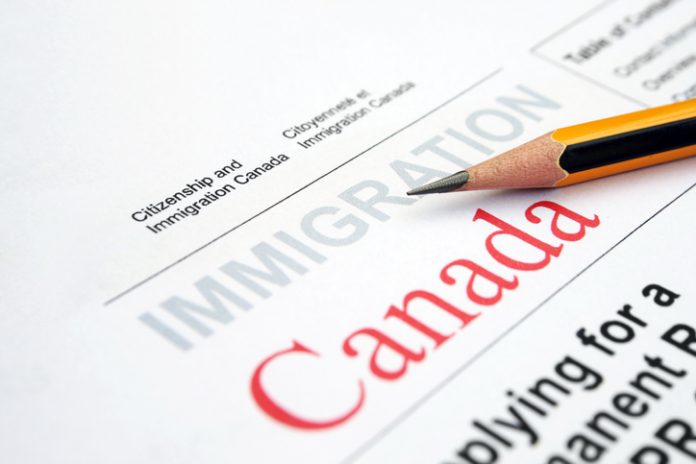Canada is where the rest of the world wants to live, so say numerous global surveys. Thanks to a new immigration policy, that desire has become more plausible. Canada is about to open its door wider to immigration.
On Tuesday, November 1, the Federal Government announced a new immigration policy that will add 500,000 new Canadians annually by 2025. The government sees increased immigration as key to securing our economic future. Over the next three years, we will see 1.35 million new Canadians.
Federal Immigration Minister Sean Fraser’s new immigration targets are necessary to ensure Canada’s future economic prosperity. At present Canadian industries have a significant labour shortage. About one million jobs are vacant across the country. A condition made worse by the pandemic.
The new immigration plan emphasizes increasing the number of immigrants who will be admitted based on their work skills or experience.
The Business Council of Canada (BCC) says that employers across the country are struggling to fill jobs. BCC President Goldy Hyder wants to see the number of immigrants increase and applauds the government announcement. “Every unfilled job means one less person contributing to our economic growth and one less person paying taxes to support social infrastructure,”
The government has a backlog of 1.3 million immigration applications in the system. Canada will also accept 76,000 refugees this year and plans to take in that number in the foreseeable future.
Canada is consistently at or near the top of the list of countries where others want to live. Google says Canada tops the list in searches of countries to relocate to among 50 other nations. Canada’s values include government transparency, civil liberties, quality of life, economic freedom, and education.
Canada’s open-door immigration policy is in stark contrast to those of governments in Western countries such as Sweden and Italy. Their newly elected parties seek to curtail immigration and blame immigrants for increased crime and disorder.
With Canada at the top of the global wish list and with many jobs available and our open door policy, the indicators would seem positive. However, the question that must be asked is how easily do our newcomers assimilate into Canadian culture and society.
In a recent survey, Environics Canada says Canadians are more open-minded about immigration than ever. Seven in 10 Canadians express support for current immigration levels, the highest majority recorded in Environics surveys in 45 years.
Yes, Canadians may be more accepting of newcomers, but “Canada the good” is not without prejudice, racism, and hatred. Just a few short decades ago Canada was mostly white society.
New Canadians face numerous challenges in a new country, including a new culture and a new way of life. Plus they must deal with language, housing, employment, isolation, prejudice, cultural differences, transportation, access to services, raising children, and not to be forgotten, Canada’s weather!
The government plan is for Canada to become a cultural mosaic. Based on the belief that Canada as a whole becomes stronger by having immigrants who bring their cultural diversity for all Canadians to learn.
In contrast, the U.S. tells immigrants that once they land on American shores, they are Americans and expected to adopt and follow the American way.
The Canadian plan has been to pursue a strategy of recruiting immigrants to make up for its aging native-born population and low birthrate. This strategy has a broad base of public support. The undercurrent is that about half of those surveyed believed newcomers were “not adopting Canadian values,” suggesting public support could become more volatile.
The cultural mosaic has some problems that are not resolved quickly or easily. Racism has been an issue in Canada since the arrival of the white man from Europe. They captured Native people’s lands and isolated Native cultures.
Salima Samnani a lecturer at the University of British Columbia and a lawyer who works with Indigenous clientele says, “there is in Canada entrenched racism,”
Ms. Samnani, whose Indian family immigrated to Canada from Kenya when she was 12, has encountered racism firsthand, including being mistreated in school, when using public transport, and while being served in stores. She says, “It cannot be understated how difficult it is to adjust to Canadian life as a new immigrant. Especially, when you are someone who is not white.”
The majority of new immigrants to Canada arrive from countries in Asia and Africa. The projection is that by 2041, one in four Canadians will be born in those continents. Half of the immigration goes to Ontario, mostly to Toronto and Ottawa.
Canada has a long history of immigration. Millions of people from all over the world have chosen, and continue to choose, Canada as their new home. In 2021, more than 8.3 million people, or almost one-quarter (23.0%) of the population, were, or had ever been, landed immigrants or permanent residents in Canada.
Canada continues to age, and fertility is below the population replacement level. The main driver of population growth is immigration. Statistics Canada’s recent population projections predict immigrants could represent from 29.1% to 34.0% of the population of Canada by 2041.
What about Canada and the cultural mosaic? Is this the right philosophy? Are we importing new Canadians that are also bringing with them social and cultural agendas that they supposedly have left behind them? Could factions of imported dysfunction undermine our society or parts of it?
Are we assuming that all immigrants arriving in Canada are here to pursue a better life and make Canada a better place for all? Should we be concerned that some of our new immigrants are intent, like our Swedish and Italy allies say, with crime and disruption?
Our government has chosen the way to our future. For Canada to grow both culturally and economically, we must open our door wider to immigration and build the Canadian mosaic.



















